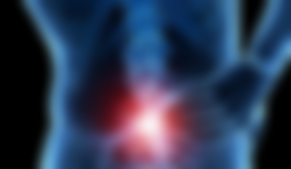Disc herniation, a disease of the 21st century

Disc herniation is a degenerative disease of the spine. It is a disease of the modern lifestyle. Experts point out that about 80 percent of the population suffers from this disease.
There is no critical age for disc herniation. It also occurs in the younger population, in their twenties, although it was once thought to be a disease of the elderly. Men are more susceptible than women.
Disc herniation occurs in the cervical and lumbar spine, the exact cause of its occurrence is unknown. Genetics, weak connective tissue, poor body posture, aging of the spine, physical strain, weak back muscles and obesity play a big role.
"A disc herniation is a distortion of the joint between two vertebral bodies, when the upper vertebral body under the weight of the rest of the spinal column presses the elastic disc, pushes it outwards and then makes contact with the nerve,"
The symptoms are: pain in the shoulders, neck stiffness, headache, ringing in the ears... and there can also be pain and tingling in the lower extremities, hip, knee, as well as painful and limited movements. It is treated with medication and physical therapy.
The best medicine for recovery is kinesi-therapeutic treatment of exercises, which is determined on the basis of each patient and is conducted as a prevention in the further course of life.
After recovery, the patient is trained in physical therapy for further continuation of treatment without pain, which is also a form of prevention. The operative method of treatment is applied in the last phase, most often when the muscles have weakened.
IN WHICH PART OF THE SPINE DOES A HERNIATED DISC MOST OFTEN OCCUR?
Disc herniation occurs most often in the lower back (lumbar), less often in the neck (cervical), and extremely rarely in the thoracic (thoracic) part of the spine.
WHAT ARE THE SYMPTOMS OF A LUMBAR HERNIATED DISC?
First of all, it is pain and limited movements in the lumbar part of the spine, and then spasm, tension in the back muscles, often with pain and tingling down the leg, with weakness in the leg muscles, difficulty walking on toes or heels, difficulty and painful standing and sitting, as well as the most severe and fortunately the rarest disorder of urination, stool and sexual function in men. The pain can be dull and long-lasting, but it is usually very strong, radiating or sharp "like a knife stab" and increases with coughing, sneezing and straining.
WHAT ARE THE SYMPTOMS OF A HERNIATED DISC IN THE CERVICAL SPINE?
These are pain and limited movements in the neck, with spasm and tension in the muscles of the neck and shoulders, with pain and tingling down the arm, with weakness in the muscles of the arms. The pain can be very strong and sharp or dull and constant.
In advanced disease, and sometimes from the very beginning, signs of damage to the spinal cord and/or nerve roots - myelopathy and radiculopathy - may appear. They are manifested by weakness, numbness, tingling and/or clumsiness in the arms and legs. There is also often a feeling of dizziness and instability, especially with sudden movements in the neck.
WHO EXAMINES PATIENTS WITH THE MENTIONED DISORDERS?
Disc herniation requires multidisciplinary treatment, and depending on the leading symptoms, the examination is performed by a specialist in physical medicine and rehabilitation and a neurologist, and if necessary, a rheumatologist, orthopedist, ENT, ophthalmologist and spinal surgeon.
WHAT IS THE DIAGNOSIS BASED ON?
The diagnosis is made on the basis of:
- Anamnesis - through a conversation with the patient, data are taken on the characteristics and quality of pain, as well as other ailments.
- Clinical examination of the neck and hands - the function of the bone system, muscles and nerves is examined.
- Diagnostic procedures.
WHICH DIAGNOSTIC PROCEDURES ARE USED ?
In the process of obtaining and confirming the diagnosis, the following methods are used:
- X-ray imaging,
- MR - magnetic resonance, as the "gold standard" in diagnostics,
- CT - computerized tomography (scanner),
- EMNG - electromyoneurography,
- Doppler blood vessels of the neck and head,
- EEG - Electroencephalography,
- SSEP - Somatosensory evoked potentials
– Laboratory testing.
HOW IS A HERNIATED DISC TREATED ?
Treatment of a herniated disc can be
Conservative (non-operative) - is carried out with medication and physical procedures.
Operationally.
